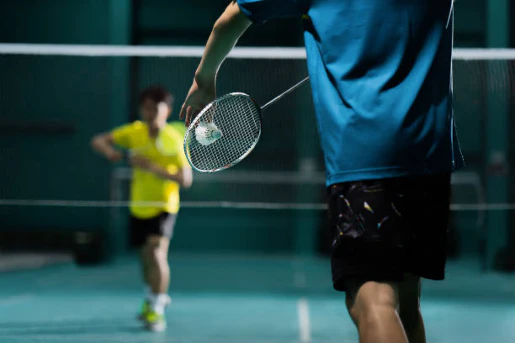Basic tactics in singles Badminton
Singles badminton is a game of strategy, endurance, and tactical awareness. While technical skills form the foundation of your game, understanding and implementing effective tactics can significantly elevate your performance on court. This article explores fundamental tactical approaches that every singles player should master.
Court Control: The Center Domination Strategy
The most fundamental tactical concept in singles is controlling the center of the court. After each shot, aim to return to a central position (slightly forward of center) that minimizes the distance to any corner. This "base position" allows you to:
- Respond quickly to any shot direction
- Force your opponent to play more precise shots
- Conserve energy through efficient movement patterns
When you control the center, you force your opponent to the periphery, creating opportunities to exploit.
The Four-Corner Pressure System
A classic singles tactic involves systematically moving your opponent to all four corners of the court. This approach:
- Tests your opponent's mobility and court coverage
- Reveals weaknesses in specific areas
- Creates fatigue over time
- Opens spaces for winners when your opponent is out of position
Begin rallies with shots that pull your opponent wide or deep, then exploit the opposite corner. For example, a deep clear to the backhand followed by a drop to the forehand front court.
Playing to Weaknesses
Identifying and targeting your opponent's weaknesses is essential tactical intelligence:
- Most players have a weaker backhand than forehand
- Many struggle with certain shot combinations (e.g., net shot followed by a deep clear)
- Some have difficulty with specific shot types (e.g., fast drives or sharp drops)
Early in the match, test different areas and shot patterns to identify vulnerabilities, then systematically exploit them.
Attacking the Mid-Court
The area between the net and mid-court is often a tactical blind spot. Shots played here:
- Are difficult to attack or defend effectively
- Create indecision between forehand and backhand
- Disrupt your opponent's rhythm
- Set up opportunities for follow-up attacks
Half-smashes, drives, and push shots directed to the mid-court can be particularly effective when your opponent expects either a net shot or a deep clear.
Controlling Pace and Rhythm
Managing the tempo of play is a sophisticated tactical tool:
- Fast-paced exchanges pressure opponents with less reaction time
- Slow, controlled rallies test patience and shot precision
- Varying the pace disrupts your opponent's timing
The player who dictates the rally's pace often gains a tactical advantage. If your opponent prefers fast exchanges, occasionally introduce slower, more controlled shots to break their rhythm.
The Serve as a Tactical Weapon
The serve initiates every point and offers a prime tactical opportunity:
- Short serves limit your opponent's attacking options
- Flick serves surprise opponents focused on the net
- High serves create time to prepare for the return
- Varied serving patterns prevent anticipation
Develop at least three different serve types and use them strategically based on your opponent's tendencies and the match situation.
Deception and Disguise
Hiding your intentions until the last possible moment creates significant advantages:
- Hold a consistent preparation position for different shots
- Use late wrist action to change direction
- Maintain the same backswing for both attacking and defensive shots
- Look in one direction while playing to another
Even simple deception, like appearing to play straight while hitting cross-court, can force errors and create openings.
Defensive to Offensive Transitions
Singles players must master the art of transitioning from defense to offense:
- When defending, aim for height and depth to buy recovery time
- Use neutral shots (like a straight clear) to regain center court position
- Look for mid-court returns as opportunities to counter-attack
- Recognize when your opponent is off-balance and capitalize immediately
The ability to switch from defending to attacking often separates skilled players from beginners.
Managing Energy and Pressure Points
Singles requires tactical energy management:
- Recognize when to conserve energy (early game points)
- Identify crucial momentum-shifting points to maximize effort
- Apply extra pressure at game points or when leading
- Use the intervals between games for tactical adjustments
Reading Patterns and Adaptability
Advanced tactical awareness involves:
- Identifying your opponent's favorite shot combinations
- Recognizing when they fall into predictable patterns
- Adapting your tactics as the match progresses
- Implementing counter-strategies when your initial plan meets resistance
The most successful singles players continuously adapt their tactics based on what's working and what isn't.
Conclusion
Singles badminton tactics require both pre-match planning and in-game adaptability. Start by implementing these basic tactical approaches, then develop your own style and strategic preferences. Remember that tactical maturity comes with experience—each match provides new insights into effective court strategies. By combining technical skill with tactical intelligence, you'll transform from a reactive player into a proactive strategist who controls the flow of play.
